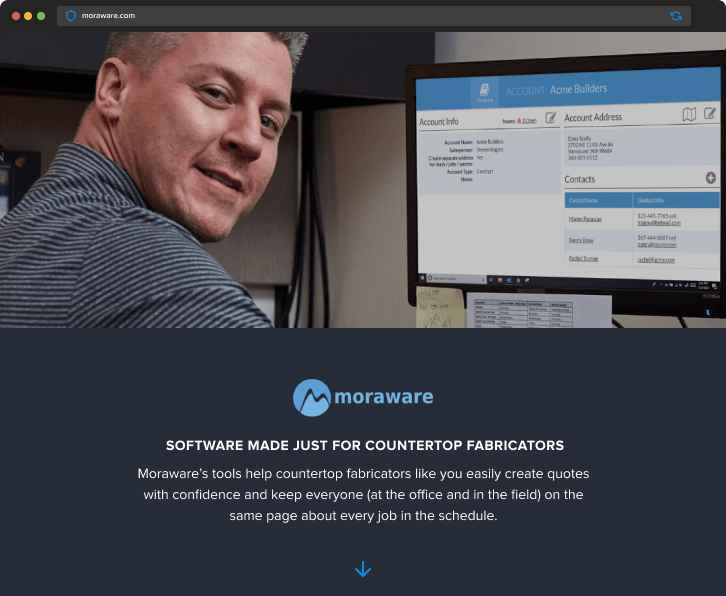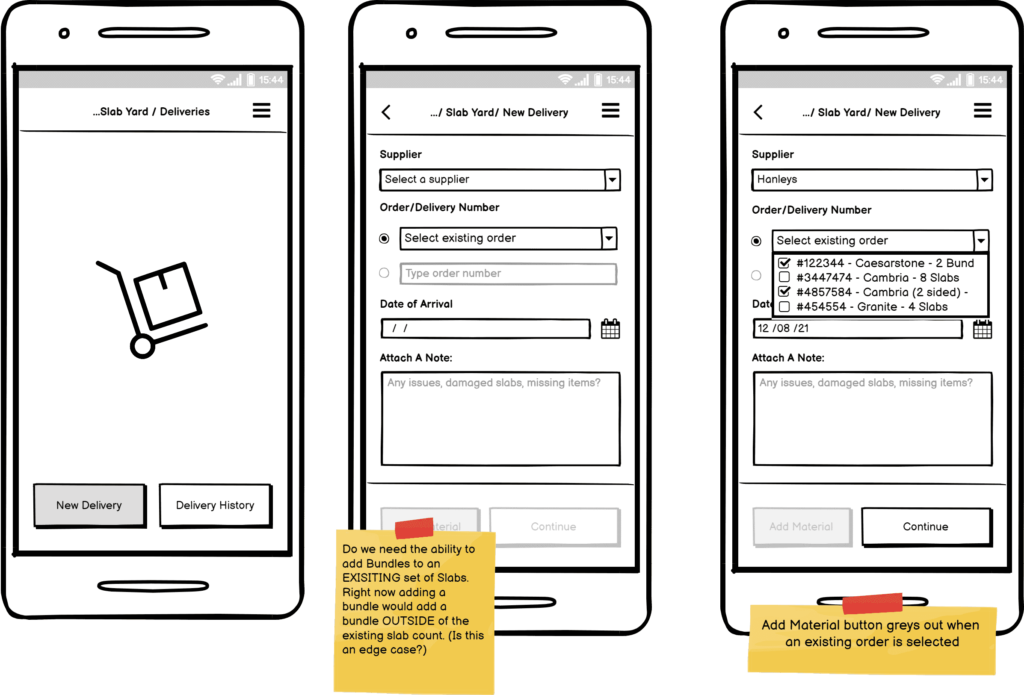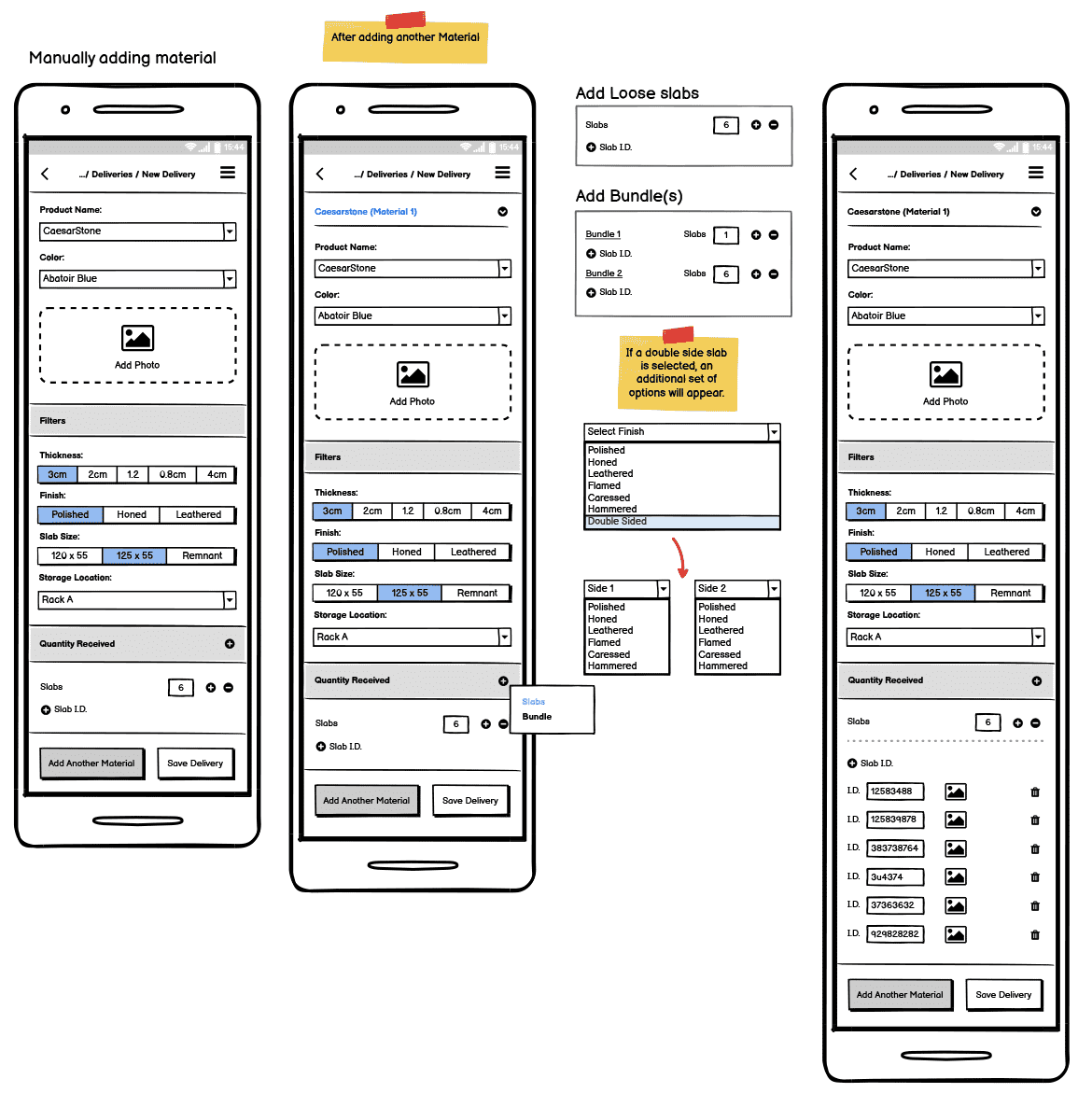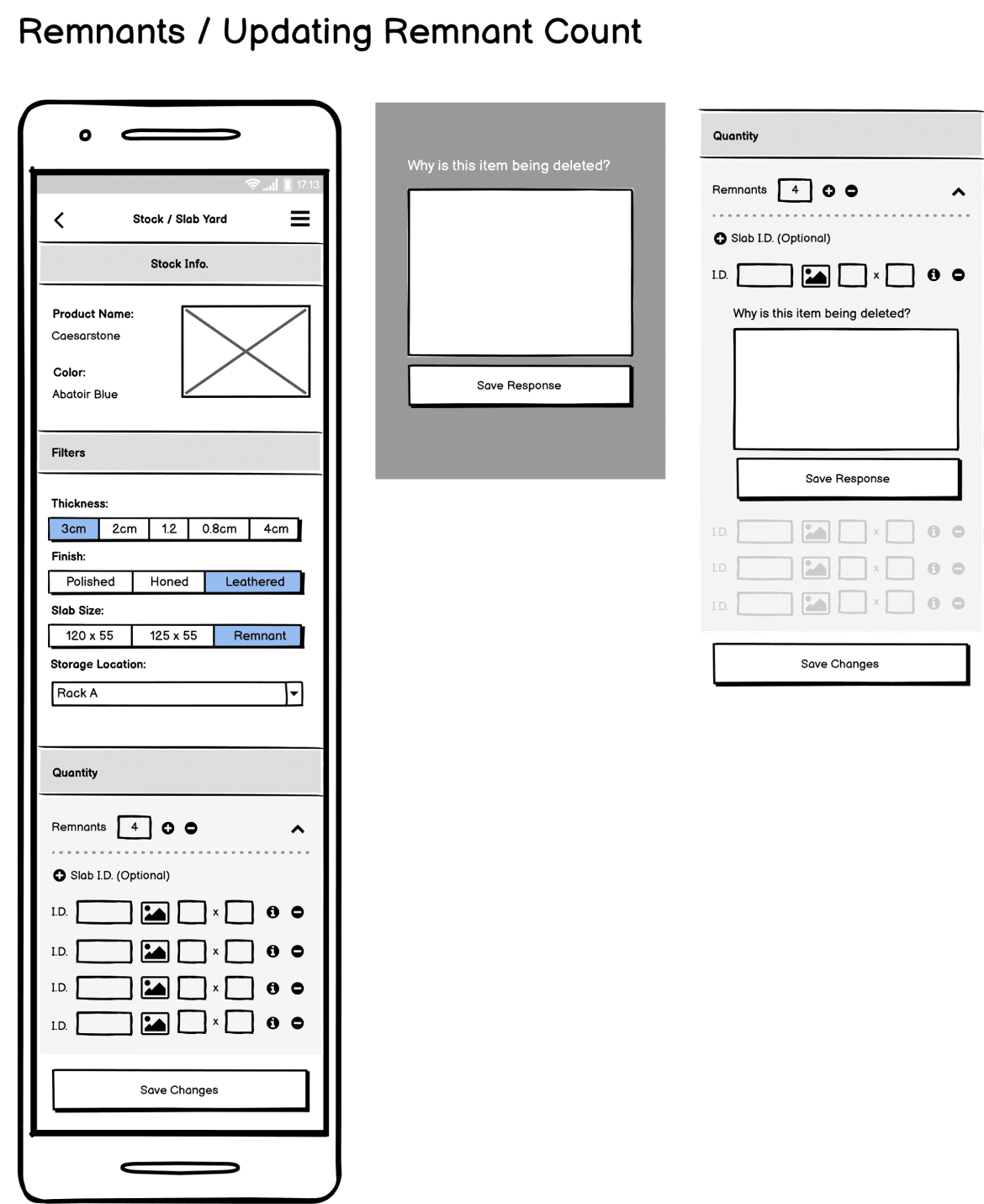Case study: Moraware
Reducing UX debt for Moraware. SaaS for countertop fabricators


“We already have a full-time designer, but we were behind on one project and needed some additional help to get over the hump. Nathan blended with our team and our existing designer perfectly.
Working with Nathan has been great. He allowed us to move much more quickly and advance our software designs ahead of development needs.
We worked very closely and collaboratively – and often asynchronously. Each day or two, we would chat, or I would record a screen share of a feature detail we were working on. The next day, Nathan would come back with wireframes that realized the goal of that feature. Then, rinse and repeat on the next feature. We reviewed these designs with various team members and continued to iterate until they were ready to give to developers.
Nathan quickly understood our software and what we were trying to do for our users. He has a great sense for building SaaS software that needs to continue delivering increasing customer value.
I strongly recommend working with Nathan!”
Patrick Foley
Senior Product Manager, Moraware.
An introduction to Moraware
Moraware began ten years ago as a brotherly favor. Over time, their software grew into a complete solution for countertop fabricators. While initially designed by their dev team (which has gotten them to where they are today with over 10.000 active customer accounts), it has left them with a lot of design and technical debt. Improving customer success through improvements to the software, alongside creating new areas, meant this project would be a challenge… speaking of which.
The challenge.
Every day, staff across the US receive deliveries to their countertop fabricator warehouses. Accurately receiving these deliveries and subsequent stock counts is critical to the success and profitability of these businesses. Currently, there is no way to do this using Moraware.
The challenge was to design a new addition to the Moraware software suite: a mobile-first app that allows warehouse staff to accurately receive, count, and update stock… while being tied into the main body of the software.

The process.
Moraware has a full-time UX designer and several product managers. I was teamed up with their senior product manager, Patrick Foley. Patrick walked me through the software, explaining its limitations, desired outcomes from working together, and ways to communicate and collaborate.
I spent some time looking around the software and making notes. To say the software was big would be an understatement. I needed to dig in to understand the needs of companies that would use such software.
Initial sprints would involve just Patrick and myself. Once we got to a stage where something had legs, it would be presented to the rest of the team. However, early on I learned a valuable lesson: Sometimes, a wireframe can be too clean.
Initially, I worked in Figma, which I love. However, some team members got confused because my mockups looked too developed. They thought they were looking at finished designs. I quickly took a step back and went to Balsamiq. For better or worse, there is no mistaking a wireframe made in Balsamiq. It’s an oldie but a goodie.
The entire process was very collaborative, which is my preferred way of working. Ideas grow from feedback and other people’s perspectives, and I thrive on this. You may be wrong to go in a certain direction, but you won’t know until you go there.

Problems and challenges.
The existing software was very old school, not just in looks but also in implementation. Given its size, all work would be pushed out gradually and follow certain established design guidelines. We couldn’t go crazy and reinvent Moraware. Moraware wasn’t looking for a UX overhaul. They had thousands of active users, which meant no decision could be taken lightly.
Time zone differences…Not exactly a problem.
I’ve worked remotely for the last 8 years, so working around time zones is not new. However, finding times when everyone is available to meet and discuss work can sometimes be challenging. Thankfully, tools like Slack, Zoom, and good old screen-recording software help ease the pain. In the end, working asynchronously gives me and the client the freedom to do the job.
Project expectations.
While there was a general expectation of “Let’s make this incrementally better,” certain departments had differing opinions on achieving this. The great thing about Moraware was the collaborative aspect. While my main point of contact was the senior product manager, I was also in close contact with their UX designer and the development team. All presentations involved the whole team.
Customer support is an often-overlooked department in any feedback session. They are on the frontline and deal with client frustrations daily, so they are uniquely positioned to help.
One aspect that I really enjoyed about Moraware was the small changes mentality. It was refreshing compared to the go big or go home attitude that can get some businesses into trouble. Working like this meant that iterations were ongoing, and nothing stood still.

Understanding Moraware’s needs
Customer personas or real-life testers?
Moraware is lucky enough to have thousands of customers. All the work was based on real customer feedback and interaction, gathered through one-on-one chats between the product manager or support staff and the customer. While customer feedback can sometimes be skewed, the team at Moraware was experienced enough to know which information was valuable and which to skim over.
The iterative process.
As with 99% of all new projects, early user-flow diagrams and designs were sketched on paper. Once I had a rough idea of the direction, I wireframed the screens. While Balsamiq is certainly more old-school, it does a great job of removing distractions when presenting to the team. It’s very important when presenting screens that the team understands they are looking at wireframes and not a lo-fi version of a finished concept (See above 😊).


Results and final thoughts.
My work with Moraware lasted several months. During that time, I worked on three different areas of the software, each affecting the other. Working with such an experienced product manager made the project thoroughly enjoyable. Constant iteration, updates, feedback sessions, and asynchronous work methods allowed us to get a lot done quickly.
Through our work together, Moraware will save their customers considerable time using the software and money through lost hours, stock, and client material orders.
Every business is a world unto itself, from work to systems and communication. Being the hired gun often means you must adapt to fit the situation, but with Moraware, both parties adapted to a productive process for everyone. It was a truly satisfying project.

Your dedicated UX studio without the studio salary.
The average salary for a product designer in the United States is between $75,000 and $119,000. Not everyone can commit to such numbers.
Beyond the Pixel makes UX accessible to growing SaaS businesses without the commitment or cost of a full-time employee.